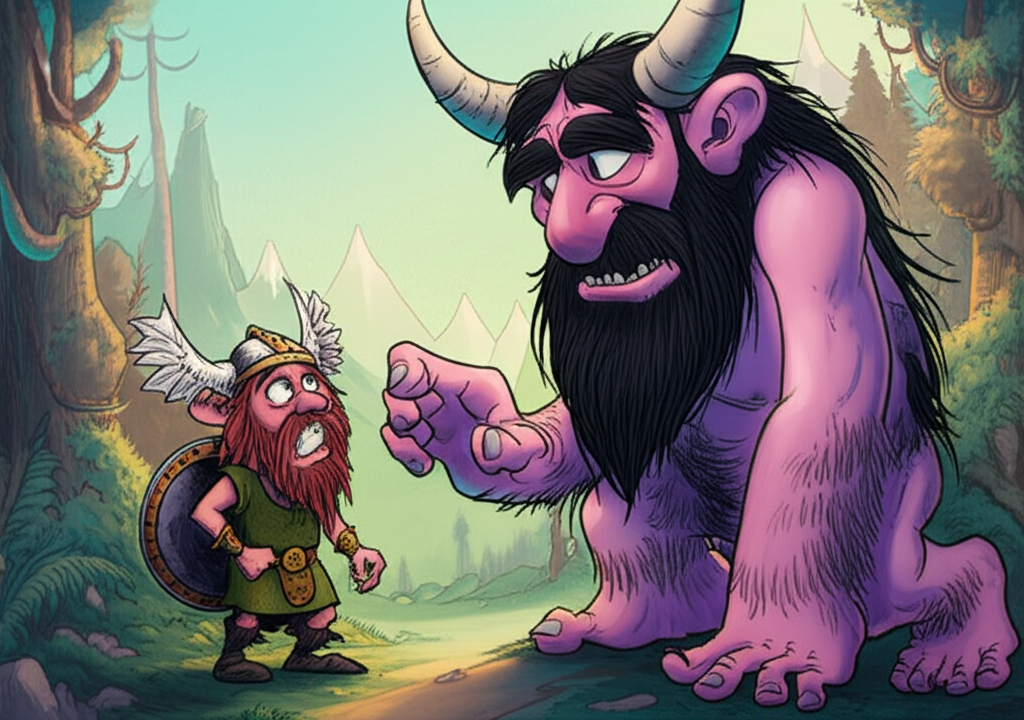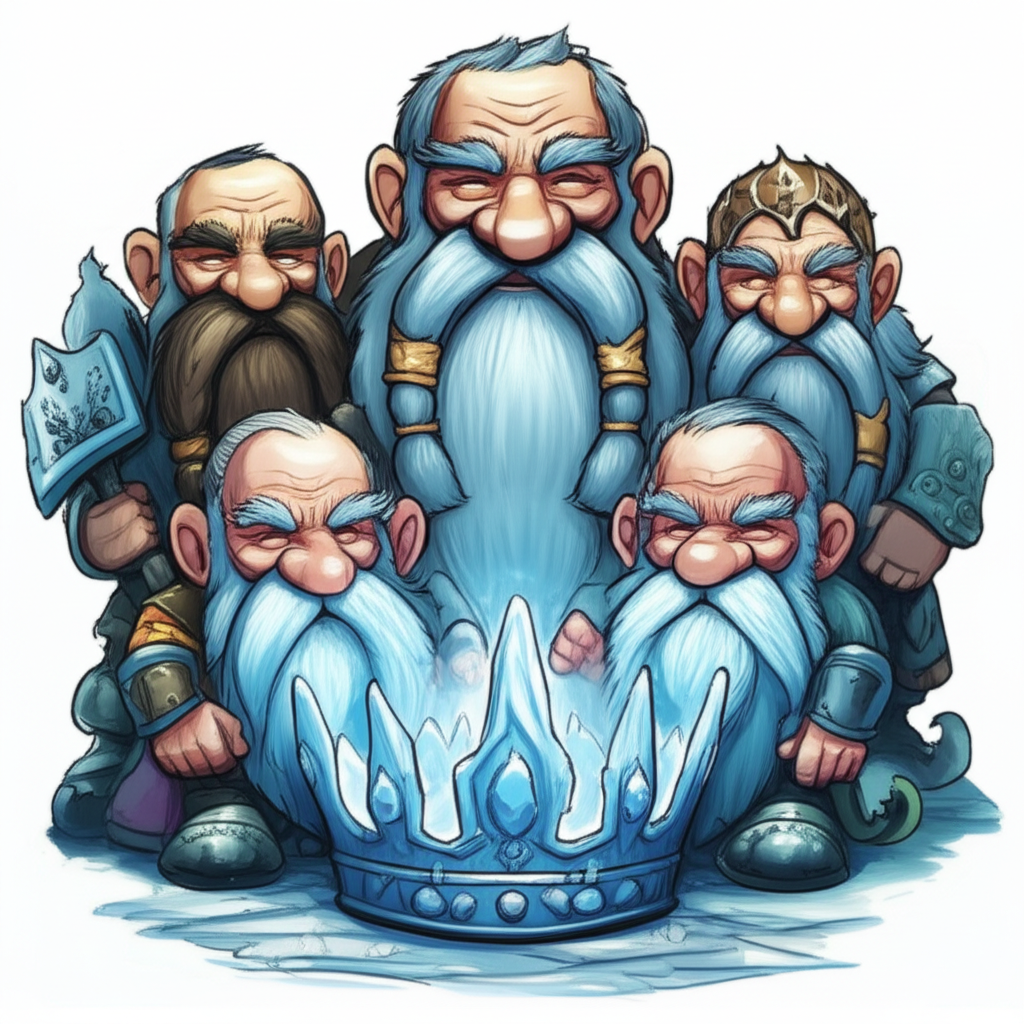The ancient world, particularly the northern reaches of Europe, was a land of stark contrasts: breathtaking natural beauty and unforgiving wilderness, communal warmth and fierce individualism. From this crucible of experience, a rich tapestry of stories emerged, woven by the hands of early Germanic peoples, particularly those in Scandinavia and Iceland. Among these captivating narratives, often recorded in Eddic poems and sagas centuries later, is the poignant tale of Baldr’s death and the profound aftermath that shook the very foundations of Asgard, the realm of the gods. It is a traditional story, passed down through generations, offering a window into the worldview and cultural values of ancient people.
Origins and Cultural Background: A World Shaped by Myth
This myth originates from Norse mythology, a complex system of beliefs and narratives that shaped the lives of Viking Age societies, roughly from the 8th to the 11th centuries CE. For these people, life was intimately connected to the natural world – the rhythm of the seasons, the bounty of the land, and the unpredictable fury of the sea. Their society was often agrarian, supplemented by hunting, trade, and, at times, seafaring expeditions.
In this challenging environment, people sought to understand the forces that governed their existence. Their worldview was one where gods and goddesses were not distant entities but active participants in the cosmos, influencing harvests, battles, and the fate of individuals. They believed in a multi-layered universe, with realms like Asgard (home of the Æsir gods), Midgard (the human world), and Helheim (the underworld), interconnected by the world tree Yggdrasil. Fate, or wyrd, was a powerful concept, suggesting an ultimate, inescapable destiny, even for the gods themselves. Courage, honor, and loyalty were highly valued, yet the pervasive threat of chaos and the eventual destruction of the world, Ragnarök, loomed large in their collective consciousness. Myths like Baldr’s death were not just entertainment; they were explanations for the inexplicable, moral lessons, and reflections of a profound existential understanding.
Characters in the Cosmic Drama
At the heart of this tragic narrative are several key figures, each embodying distinct aspects of the mythological imagination:
- Baldr: The shining god, son of Odin and Frigg, was universally beloved. He was associated with light, purity, beauty, and joy, a symbol of everything good and bright in the world. His presence brought warmth and harmony to Asgard. To the ancient people, Baldr represented the ideal of innocence and the fleeting nature of perfection.
- Loki: The cunning trickster god, a jötunn (giant) by birth but an adopted blood-brother to Odin, stood in stark contrast to Baldr. Loki was a master of deceit, often a catalyst for both good and ill. While sometimes aiding the gods, his nature was inherently chaotic and driven by envy, malice, and a desire to disrupt order. He embodied the unpredictable and destructive forces present in the world.
- Frigg: As Odin’s wife and queen of the Æsir, Frigg was a goddess of motherhood, marriage, and foreknowledge. She was deeply devoted to her children, particularly Baldr, and her actions in the story highlight the protective instincts of a parent, even a divine one, against the inevitable march of fate.
- Höðr: Baldr’s blind brother, Höðr, was a figure often associated with darkness or winter. His role in the narrative is tragic, an unwitting instrument of destruction, symbolizing how even innocence can be manipulated to serve malevolent ends.
- Hermóðr: Known as the swift messenger of the gods, Hermóðr embodies hope and desperate effort, undertaking a perilous journey to the underworld in a futile attempt to reverse fate.
- Hel: The grim ruler of Helheim, the realm of the dead, Hel is a daughter of Loki. Her domain is a cold, shadowy place, and she represents the unyielding finality of death and the immutable laws of the underworld.
The Unraveling of Asgard: A Narrative of Loss and Despair
The story begins with a shadow falling over the otherwise radiant Asgard. Baldr, the most beloved of all the gods, began to be plagued by terrible dreams – visions of his own death. His mother, Frigg, distraught by these omens, resolved to protect her son. She traveled throughout the nine realms, extracting solemn oaths from every living thing, every element, every plant, and every stone, that they would never harm Baldr. All willingly swore, for Baldr was universally cherished. Confident in her son’s invulnerability, Frigg returned to Asgard, and the gods, in their playful joy, began to amuse themselves by throwing weapons at Baldr, watching them harmlessly bounce off him.
However, the malicious Loki observed this scene with simmering envy. He disguised himself as an old woman and approached Frigg, subtly questioning her. Frigg, in her momentary relief and pride, inadvertently revealed the one tiny exception to her grand oath: the mistletoe, which she deemed too young and insignificant to swear.
Loki’s eyes gleamed with wicked inspiration. He immediately sought out the mistletoe, fashioned a sharp dart from its wood, and returned to the gods’ assembly. There, he approached the blind Höðr, Baldr’s brother, who stood apart, unable to participate in the game. With feigned kindness, Loki offered to guide Höðr’s hand, placing the mistletoe dart into it. "Let us honor your brother too," Loki whispered, "for he is as dear to you as he is to the rest of us." Unsuspecting, Höðr hurled the dart in the direction Loki indicated.
The mistletoe dart flew true, piercing Baldr’s heart. The light of Asgard dimmed as Baldr, the embodiment of joy, fell lifeless to the ground. Silence, thick and heavy with shock, descended upon the gods. Grief, raw and agonizing, erupted. This was no mere wound; this was death, final and absolute. The unassailable Baldr, the pure and bright, was gone.
The gods prepared a magnificent funeral. Baldr’s body was placed upon his great ship, Hringhorni, along with his wife Nanna, whose heart burst from sorrow and who was laid beside him. The ship was set ablaze, a grand funeral pyre, as the gods wept openly, despairing at a loss they believed irreversible.
Yet, Frigg, in her profound anguish, refused to accept defeat. She asked if any god would dare to ride to Helheim, the realm of the dead, to plead for Baldr’s return. Hermóðr the Bold, Baldr’s brother, stepped forward. He mounted Sleipnir, Odin’s eight-legged steed, and rode for nine days and nine nights through dark valleys, across the Gjallarbrú (the bridge over the river Gjöll), until he reached the gates of Helheim.
There, he met Hel, the grim ruler, seated on her throne. Hermóðr tearfully recounted the sorrow of Asgard and begged for Baldr’s release. Hel, cold and calculating, agreed, but on one condition: if every single thing in the cosmos, living or inanimate, would weep for Baldr, then he could return to Asgard.
Hermóðr returned with this message, and the gods sent messengers throughout the world. And indeed, everything wept for Baldr – trees shed tears of sap, stones wept dew, even the metals in the earth seemed to weep. The entire cosmos mourned the loss of the brightest god. However, as the messengers returned, they found one lone giantess, named Þökk (meaning "thanks" or "gratitude"), sitting in a cave. When asked to weep for Baldr, she scoffed. "Þökk will weep dry tears for Baldr," she declared, "Let Hel keep what she holds!" The gods immediately suspected Loki, for Þökk’s words and demeanor perfectly mirrored his cruel indifference.
Because of this one refusal, Baldr remained in Helheim, his return denied. The gods’ despair deepened, and their focus turned to Loki, whose malice had orchestrated this catastrophe. They hunted him down, bound him with the entrails of his own son, and condemned him to lie beneath a serpent whose venom dripped onto his face, causing him agonizing pain. This punishment, however, was merely a precursor to a far greater cataclysm.
Symbolism and Enduring Meaning
Baldr’s death is far more than a simple narrative; it is rich with symbolic resonance. For the ancient Norse, Baldr’s demise represented the loss of innocence, the end of a golden age, and the inevitable decay that precedes ultimate destruction. His purity and light were extinguished, signifying a shift towards a bleaker future. Loki’s betrayal embodies the destructive power of envy, unchecked malice, and the forces of chaos that undermine order and bring about suffering. He is the shadow to Baldr’s light, a necessary antagonist to explore the darker aspects of existence.
The mistletoe, seemingly insignificant, highlights the vulnerability of even the most protected and the idea that a small, overlooked detail can bring about immense destruction. Frigg’s desperate efforts to save her son speak to the depth of maternal love and the tragic limitations of even divine power against the decrees of fate. Hel’s condition—that all must weep—symbolizes the harsh, unyielding nature of death and the profound impact that collective grief (or its absence) can have. Ultimately, Baldr’s death is a pivotal event, marking the beginning of the end for the Norse gods, an irreversible step towards the prophesied Ragnarök, the twilight of the gods and the renewal of the world. It explores themes of morality, the fragility of peace, and the consequences of treachery.
Modern Interpretations and Cultural Resonance
Today, the myth of Baldr’s death continues to captivate and influence. In literature, it has inspired countless retellings and allusions, from classic fantasy novels to contemporary works exploring mythological themes. Neil Gaiman’s American Gods, for instance, draws heavily on Norse mythology, though Baldr’s story is given a unique twist.
In popular culture, elements of Norse mythology, including its characters and narratives, are frequently seen in movies and television series. While often heavily adapted, Marvel’s cinematic universe with its portrayal of Thor and Loki brings these figures to a global audience, though Baldr’s specific story is less prominent. Television series like Vikings also incorporate aspects of the ancient Norse worldview and cultural practices, albeit within a historical drama framework.
Video games have perhaps been the most direct medium for reinterpreting these myths. Titles like God of War and Assassin’s Creed Valhalla immerse players in worlds populated by Norse gods and legends, often taking creative liberties with the original stories while still drawing from their core essence. These modern interpretations demonstrate the enduring power of these ancient narratives to resonate with contemporary audiences, offering rich material for storytelling and exploration of universal human themes. Academically, the myth is studied for its cultural, historical, and psychological insights, contributing to our understanding of ancient belief systems and the human imagination.
A Legacy of Imagination and Storytelling
The death of Baldr, and its profound aftermath, remains a powerful narrative from Norse mythology. It is a testament to the imagination of ancient peoples, who crafted intricate stories to understand their world, their fears, and their hopes. As we engage with such myths, it is crucial to remember that they are cultural stories, products of a specific time and place, and not meant to be taken as literal truth or divine revelation.
As Muslims, we recognize that only Allah is the true Creator and Sustainer of the universe, and all power and divinity belong solely to Him. Nevertheless, exploring these cultural narratives allows us to appreciate the rich tapestry of human heritage, to understand how different societies have sought meaning through storytelling, and to reflect on the universal human experience of loss, betrayal, and the enduring quest for understanding our place in the cosmos. These tales, though fictional, continue to inspire, provoke thought, and serve as a vibrant reminder of the enduring power of human imagination and the art of storytelling.





